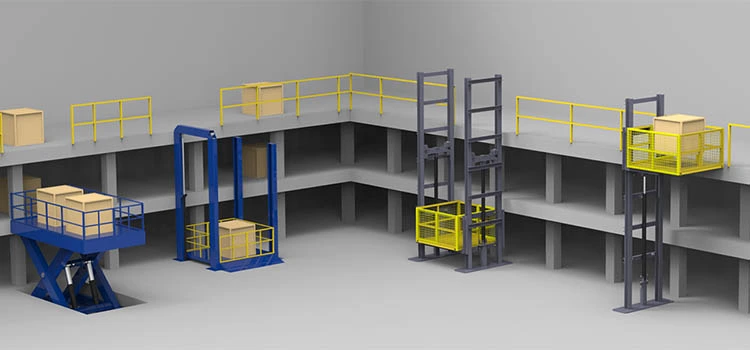Discover the Best Disabled Platform Lifts Prices UK for Residential and Commercial Use
Discover the Best Disabled Platform Lifts Prices UK for Residential and Commercial Use
Blog Article
Delving Into the World of Elevators: Usual Problems Faced by Various Lift Systems
As we navigate via the upright transport systems of modern buildings, elevators attract attention as a crucial element of our day-to-days live. Nonetheless, behind their smooth procedure lies a globe of complex mechanisms that can often experience obstacles. From hydraulic elevators to grip systems and machine-room-less styles, each lift type comes with its collection of usual problems. Recognizing these difficulties is essential for ensuring the smooth functioning of these important systems. Allow's discover the complexities that underlie the procedure of lifts and the potential problems that can arise, dropping light on the intricate internet of lift mechanisms.
Hydraulic Lifts
Hydraulic lifts, typically favored for low-rise buildings, use fluid stress to control the activity of the lift car (lift repair companies). This system entails a hydraulic pump pressing oil into a cylinder, triggering the elevator to relocate in the wanted direction. While hydraulic elevators are understood for their smooth and silent operation, they do come with their own collection of usual concerns
One prevalent problem with hydraulic elevators is oil leak. The seals in the hydraulic system can wear with time, leading to oil seepage. If left unaddressed, this not only creates a mess but can likewise affect the elevator's efficiency. Additionally, issues with the control system, such as faulty shutoffs or a malfunctioning pump, can create interruptions in the elevator's motion.
Regular maintenance and punctual repair services are vital to ensure the smooth functioning of hydraulic lifts. By addressing these usual concerns proactively, structure owners can lessen downtime and ensure the safety and performance of their upright transport system.
Traction Lifts
When thinking about vertical transportation systems in buildings, another usual kind aside from hydraulic elevators is the traction lift. Grip lifts operate using a system of ropes and weights that relocate the elevator cars and truck by clutching onto the hoist ropes. This mechanism permits smoother and quicker vertical transport contrasted to hydraulic systems.
One of the usual issues encountered by traction elevators is rope wear. The consistent motion of the ropes within the traction system can result in tear and use over time, possibly causing the lift to malfunction or come to be unsafe for use. Normal evaluations and upkeep of the ropes are vital to guarantee the lift's appropriate performance and safety.
An additional problem that grip lifts may run into is connected to the control system. Troubles with the control system can result in concerns such as irregular activity, delays in feedback times, and even full shutdowns. Regular testing and upkeep of the control system are critical to prevent such concerns and make sure the lift's integrity.
Machine-Room-Less (MRL) Elevators

Among the vital elements of MRL elevators is the portable gearless grip device that is installed within the hoistway. This equipment effectively drives the elevator car without the demand for large equipment located in conventional traction lifts. Additionally, MRL lifts normally utilize a weight system to stabilize the vehicle, more improving their energy effectiveness.
Despite their benefits, MRL lifts might face difficulties connected to repair and maintenance due to the restricted room for equipment installment. Accessibility for servicing elements within the shaft can be restricted, requiring specialized training for service technicians. Correct maintenance routines and normal inspections are important to lift companies in London make certain the ongoing smooth operation of MRL elevators.
Overloading and Weight Limitation Issues
Overwhelming and weight limitation problems are vital worries in elevator operations. Elevator manufacturers design lifts with specific weight abilities to make certain guest safety and security and devices durability.
When lifts are strained, it puts extreme strain on the electric motor, wires, and various other elements, potentially causing malfunctions or breakdowns. If they spot excess weight, safety devices such as sensors and overload sensors are in area to avoid elevators from relocating. Furthermore, exceeding weight restrictions can result in increased power usage and wear and tear on the lift system.
To mitigate straining problems, building supervisors should plainly display weight restrictions in elevators and enlighten passengers on the importance of sticking to these constraints - lift repair companies. Regular upkeep checks by qualified technicians can likewise help make sure that elevators are operating within secure weight specifications. By resolving overloading and weight limitation concerns proactively, building proprietors can enhance elevator safety and security and efficiency
Electric System Failings
Surpassing weight limitations in elevators can not only lead to mechanical problems however likewise possibly add to electrical system failures within the lift facilities. Electrical system failures are a vital worry in lift procedure, as they can trigger unforeseen shutdowns, malfunctions, or even safety hazards.
Normal maintenance and inspections are critical to determine and deal with possible electrical issues immediately, guaranteeing the efficient and secure operation of lift systems. By adhering to weight restrictions and conducting regular electrical system checks, structure owners can alleviate the risk of electric failings in elevators.
Verdict

Hydraulic lifts, typically preferred for low-rise structures, use fluid pressure to regulate the movement of the lift cars and truck.When considering disabled platform lifts prices uk upright transportation systems in structures, one more common kind aside from hydraulic lifts is the traction lift. Traction lifts operate utilizing a system of ropes and counterweights that relocate the elevator cars and truck by gripping onto the hoist ropes. Unlike typical elevators that call for a separate equipment room to house the tools, MRL elevators incorporate most of the elements within the shaft, removing the requirement for a committed device area.In final thought, lifts face typical concerns such as hydraulic malfunctions, grip system failings, and electrical system troubles.
Report this page